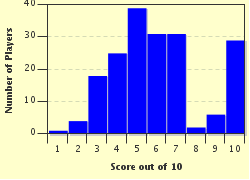Quiz Answer Key and Fun Facts
1. I found this thing just crawling along and thought, how cool, a fuzzy red ant! But my husband rushed up to keep me from petting this wingless type of wasp, equipped with a long whip-like stinger. What on earth is this crazy thing?
2. Lord have mercy, I strolled to our fence with my coffee to check my flowers and found these crazy orange caterpillars with fearsome looking black spines feeding on my passionflower. What on earth are these alien creatures feeding on my vines, future butterfly or moth?
3. Not all things in Alabama are fearsome looking, as I was delighted to be able to rescue this little brown creature, that looked like a bird with a tail extending from its wings. It kept its wings tightly shut, so I almost skipped the iridescent blue of its body. What type of crazy butterfly have I rescued?
4. I really try to leave the crazy creatures I find living, but this one was too much to handle as it was acting like a wasp whipping its long abdomen around. Not wanting to take a chance on being stung, I sprayed this crazy thing with Windex, but was sad to find that I had killed any chances at finding gold from this what?
5. My next crazy thing was massive and mottled, hanging out under my front porch light. It didn't move a muscle when I put my hand beside it to give my dear reader an idea of the size. Since it was dark, I wasn't sure if the photo would turn out or not, but luckily it did and perhaps you can determine, is it a moth or butterfly?
6. Have you ever seen an insect that fuzzy? I certainly hadn't, so I snapped a photo of this fly, characterized by its excessive body hair, lobbed antenna, and parasitoid young (which actually kill their host). What type of crazy fly did I capture?
7. Remember me mentioning how things grow bigger in the south, well this thing was HUGE, with distinct banding on its legs and eight eyes arranged in three rows (two being very large). An excellent hunter, this type of spider captures prey by ambush or even chasing it down. What kind of crazy spider is this?
8. Another very lovely rescue from my back porch, a butterfly native to the eastern United States and parts of Canada. This distinctive butterfly has a striking black and white pattern with long tails and a red dot located on the lower wings. You'd probably be crazy not to know the name of this stunning butterfly called a what?
9. Another great moth, this crazy thing was on my screen door one evening. This moth is fairly large, green and patchy, with wings resembling crumpled leaves. What type of crazy moth is this?
10. This last crazy creature almost needs no introduction at all. I was in the process of moving out of Alabama (can you blame me) when this thing came rolling out of my daughter's playhouse as I was cleaning it. One of the most venomous spiders in North America, which shiny black creature has a red hourglass on its abdomen?
Source: Author
TemptressToo
This quiz was reviewed by FunTrivia editor
Tizzabelle before going online.
Any errors found in FunTrivia content are routinely corrected through our feedback system.


